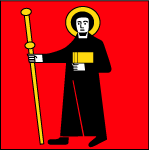Companies in Canton Glarus
See the list of places in Canton Glarus. The localities are listed alphabetically: Betschwanden | Bilten | Braunwald | Diesbach | Elm | Engi | Ennenda | Filzbach | Glarus | Haslen | Hätzingen | Klöntal | Leuggelbach | Linthal | Luchsingen | Luchsingen-Hätzingen | Matt | Mitlödi | Mollis | Mühlehorn | Näfels | Netstal | Nidfurn | Niederurnen | Oberurnen | Obstalden | Riedern | Rüti | Schwanden | Schwändi b. Schwanden | Sool | Ziegelbrücke |
List of localities

About list localities in Glarus
The list of places in the Canton of Glarus contains a total of 32 places. On this page you can see the locations from Betschwanden to Ziegelbrücke. More infos on Yellow Pages Glarus.
About Canton Glarus
Glarus is a German-speaking canton of Switzerland, located in the eastern part of the country. The capital of the canton is also named Glarus. The canton is known for its stunning alpine landscapes, rich history, and traditional Swiss culture.
Covering an area of about 685 square kilometers, Glarus is characterized by its mountainous terrain, including prominent peaks such as Tödi and Glärnisch. The Linth River flows through the canton, contributing to its scenic beauty. The region offers numerous outdoor activities such as hiking, skiing, and climbing, making it a popular destination for nature enthusiasts.
Historically, Glarus has a rich and varied past. The area was settled by the Alemanni in the early Middle Ages and became part of the Swiss Confederation in 1352. Glarus has a notable history of political and religious independence, having adopted the Protestant Reformation in the 16th century while still maintaining a significant Catholic minority. The canton is also known for its early adoption of democratic principles, including the Landsgemeinde, a traditional open-air assembly where citizens vote on local issues.
The economy of the canton of Glarus is diverse, with key sectors including manufacturing, agriculture, and tourism. Historically, the textile industry played a significant role in the canton's economy, and while it has declined, manufacturing remains important. Agriculture, particularly dairy farming and cheese production, is also vital. In recent years, tourism has become increasingly significant, with visitors attracted by the natural beauty and recreational opportunities in the region.
The town of Glarus, the cantonal capital, serves as the administrative and cultural center. It is known for its charming blend of historical and modern architecture. Notable landmarks include the Glarus Town Church, the Fridolinsbrunnen fountain, and various museums that showcase the region's history and culture. The town hosts several cultural events and festivals throughout the year, reflecting its rich heritage.
In summary, the canton of Glarus is a region marked by its natural alpine beauty, historical depth, and vibrant culture. It remains an attractive destination for residents and visitors who appreciate the combination of outdoor adventure, historical significance, and traditional Swiss charm.










